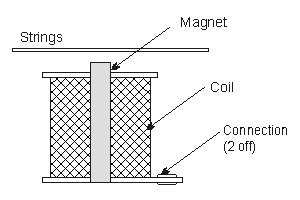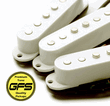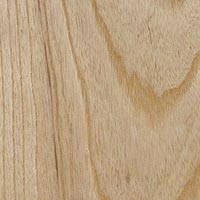Let's face it, alot of Squier stratocasters and telecasters can sound pretty great out of the box, but eventually you either want to upgrade to a more expensive Fender, or other guitar. But what if you just can't bear to part with the Squier you learned to play on? There is an answer, and it's called modding. It's usually a simple job to buy higher end parts and put them on your old guitar. I'm going to go through the different parts that you can replace, and review the most expensive hardware you can buy. I've split this up into four parts, and will post the next sections up as I finish them.
Getting Wood : Choosing Your Neck
So, you're tired of your guitar and want to spice it up a bit. The first thing you can replace, and one of the cheapest things to replace, is the neck. There are plenty of different styles to choose from, and for the most part, it's completely up to personal taste on what you want to put on your stratocaster / telecaster.
The neck is where much of the action goes on, and it's absolutely essential to have a smooth neck with good action. The wood that your neck is made out of does affect tone to some degree. There are a couple of popular wood types that are used, and understanding the differences between them is crucial to choosing a neck that works for you.
- Basswood - Basswood is a very soft, wide grained wood that is used in many acoustic necks. Although, you'll also find that many high-end electric guitar necks are made with this wood. The most expensive necks are coated with an epoxy resin to create an incredibly strong and light neck. High notes become smoothened with a basswood neck, and you'll find that your low end notes will become softened.
- Mahogany - Mahogany has been used in guitar necks since the very beginning, only younger than maple. Mahogany guitar necks compress mids, and bring out the lows and low-mid tones. It isn't as responsive to mids as Alder or Ash is though. The main selling point of mahogany necks are the vibrant and rich highs that they offer.
- Maple - Maple wood was used in the creation of the first solid body guitar. For that reason alone, it has some serious traditional appeal. Maple offers very bright highs, pronounced mids, and tight lows. It has made itself known for it's very strong tone. Many say that maple "shouts" when compared with other wood types.
- Alder - Alder is a light wood with a tight grain. It is very similar to Basswood, but has a broader range of tones. This can cause some to perceive Alder as having less developed midtones than Basswood.
- Walnut - Denser than mahogany, Walnut offers much more pronounced and smoother highs, with textured mids and very solid lows.
To really get a feel for the difference in tones, you have to get your hands on as many of these necks as you can. I'd suggest a trip to you local guitar store. Do a bit of research on which guitars use which necks, and go and play them. I've always been partial to maple necks, as I find they can hit some really funky highs. You're going to find that a lot of traditional Fender necks are going to be maple, due to the history of Fender.
Neck Styles and Obtaining A Fender Guitar Neck
If you're going with Fender for this project, then you don't have to worry about neck style. Any neck you can use with a Squier guitar will be bolt on, so you don't have to worry about jointed necks. On the contrary, if you're modding an Epiphone or a Gibson, you'll want to look into jointed necks.
Obtaining a new neck can be difficult. The easiest place to locate authentic Fender necks is off of eBay. You'll find the people who generally sell them are hobbyists or luthiers who have dismantled the original guitar and no longer need the neck. Although, if you don't like dealing with eBay, there's always Picker's Parts. You can find them
here. Be aware though, they aren't cheap. Prices range from $100-$500 on individual necks. Necks can be one of the more difficult parts to find. When pickups are brought up, there'll be too many to go through! Just keep an eye out on eBay and other smaller retailers for the type of neck you're looking for. You could also buy a dead guitar and simply salvage the neck if you really can't find what you're looking for.
How To Replace A Guitar Neck
For any Fender or Squier electric guitar, replacing the neck is remarkably simple. You just need to unbolt your current neck and bolt on your new one. You can re-use your old tuners, or you can always pick up a new pair. Squier guitar tuners can often be a little iffy. They're generally one of the things most Squier owners complain about. They aren't too expensive, and you can pick up a pair of genuine Fender tuners at Amazon
here
.
This will probably be the easiest part when it comes to modding you Squier stratocaster or telecaster.
Overall Cost
This stage shouldn't cost more than $120-130 if you're frugal, less if you find a busted guitar to salvage. It's good to try and go for the highest quality you can afford though. If you can afford to spend more, do it, because the payoff can be very worth it.
























